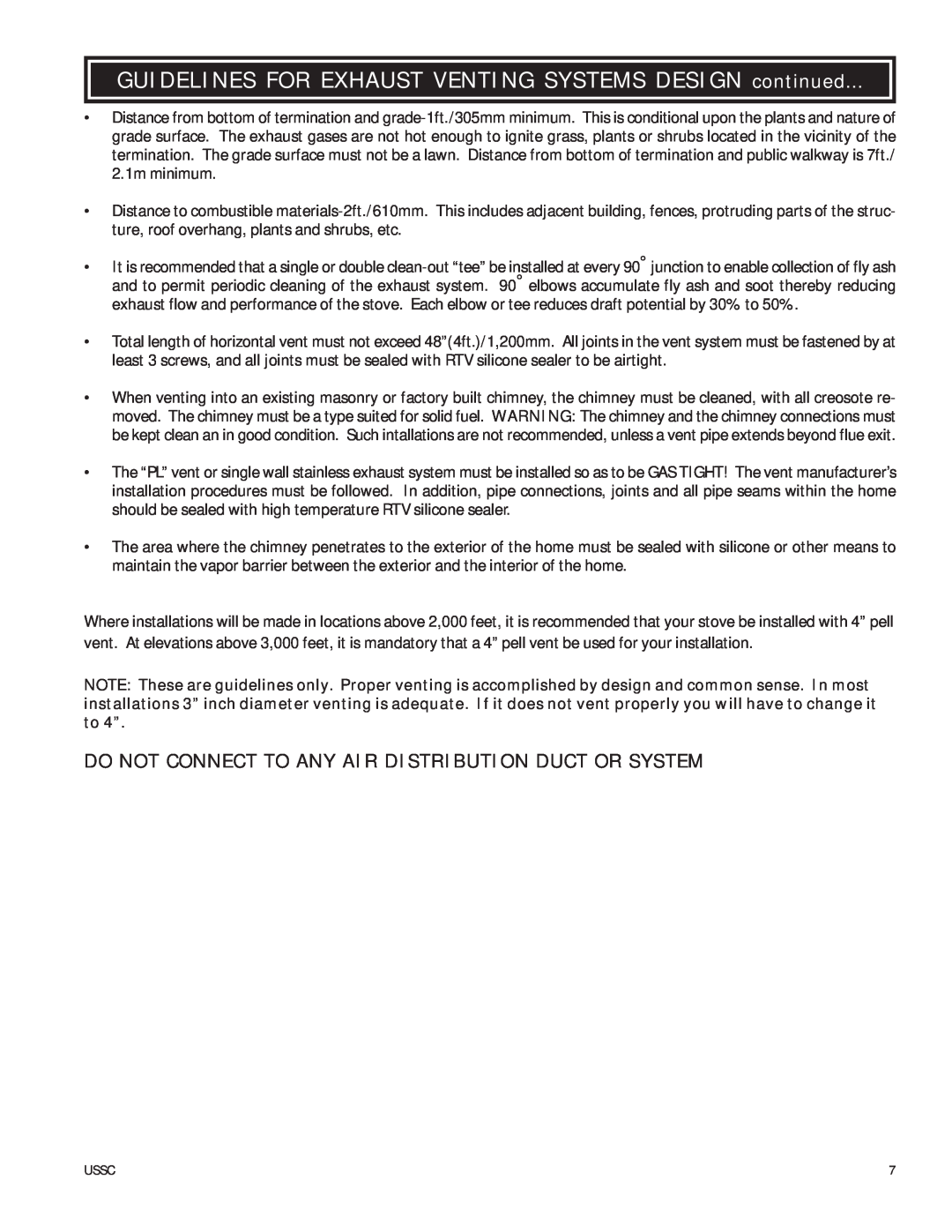GUIDELINES FOR EXHAUST VENTING SYSTEMS DESIGN continued...
•Distance from bottom of termination and
•Distance to combustible
•It is recommended that a single or double
•Total length of horizontal vent must not exceed 48”(4ft.)/1,200mm. All joints in the vent system must be fastened by at least 3 screws, and all joints must be sealed with RTV silicone sealer to be airtight.
•When venting into an existing masonry or factory built chimney, the chimney must be cleaned, with all creosote re- moved. The chimney must be a type suited for solid fuel. WARNING: The chimney and the chimney connections must be kept clean an in good condition. Such intallations are not recommended, unless a vent pipe extends beyond flue exit.
•The “PL” vent or single wall stainless exhaust system must be installed so as to be GAS TIGHT! The vent manufacturer’s installation procedures must be followed. In addition, pipe connections, joints and all pipe seams within the home should be sealed with high temperature RTV silicone sealer.
•The area where the chimney penetrates to the exterior of the home must be sealed with silicone or other means to maintain the vapor barrier between the exterior and the interior of the home.
Where installations will be made in locations above 2,000 feet, it is recommended that your stove be installed with 4” pell vent. At elevations above 3,000 feet, it is mandatory that a 4” pell vent be used for your installation.
NOTE: These are guidelines only. Proper venting is accomplished by design and common sense. In most installations 3” inch diameter venting is adequate. If it does not vent properly you will have to change it to 4”.
DO NOT CONNECT TO ANY AIR DISTRIBUTION DUCT OR SYSTEM
USSC | 7 |
